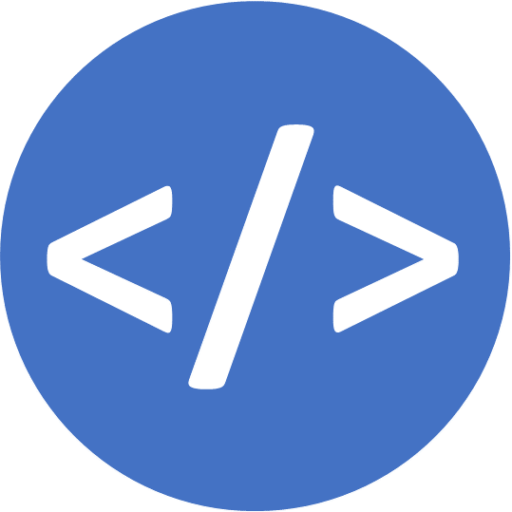If you’re a startup struggling with your go-to-market strategy (GTM strategy), then this post is for you. Here are some tips and tricks that will help you learn what to do and what not to do when going to market with a new SaaS product.
SaaS companies can fail for many reasons, but having a strong marketing strategy that encourages growth and engagement is one way to increase the likelihood of success. So before you launch your product, make sure you’ve done everything in this post to learn what not to do when going to market with your new SaaS.
Go to market strategy for B2B SaaS
Since you’re reading this, chances are that most of your customers are in some kind of enterprise or SMB company. That means they have very specific needs and pain points which only your product can solve. So in a very real sense, part of the product launch messaging for B2B SaaS businesses must promise the target audience a superior customer experience based on their pain points that only this new platform can provide.
Here are 5 tips to ensure your business succeeds when launching into the market:
- We can’t say it enough: The focus of your message should be on the superior customer experience you can provide, rather than selling products. Your new product is software-as-a-service (SaaS), which means there will always be some level or functionality involved in any value proposition.
- The go-to-market strategy for your sales team is very different if you are marketing to companies versus people. You need to identify the type of company that will buy from you, as well as who specific decision makers or champions in these organizations could be before going out into meetings with them so they know how best approach their target audience.
- In the world of business-to-business (B2B) marketing, outbound strategies are still effective. You can utilize methods like cold calling or direct mail for your campaigns
- The company size you target greatly affects your go-to-market strategy. Which demographics of companies are you targeting, whether they are really small businesses, other startups, SMBs, or enterprises?
- This may seem obvious but you need to make sure your product delivers value to these companies before you can expect them to buy.
That’s just an overview of what makes the B2B market different from B2C.
|💡Founder or PM: The Right Guide for Your Software Development Project 2022
SaaS Strategies
Keep it simple
Your SaaS go-to-market strategy should be on a single page. Contrary to popular belief, it’s not about how you’re going for more MRR in the long run — but rather gaining initial traction
Prospects: Your message should be consistent and tailored for each individual. One target market, one channel to reach prospects
Leads: For lead capturing: One method of getting contact information, one way to nurture the relationship, and only one sales conversion strategy.
Customers: One core strategy for delivering a great experience, one core strategy to increase your LTV and customer referrals.
Create your go-to-market strategy while you develop your product
The second most important tip is that you should be building your go-to-market plan at the same time or before your product. Marketing should always be part of what’s developed, never something tacked on as an afterthought.
- Use market research, data, and solid KPIs to inform how you will market your product as well as what type of ads or content strategies are most effective for it.
- You should start selling your product (or at least engaging in lead generation) before you have finished building it.
- By experimenting with buyer personas and different audiences (selling, collecting leads, interviews), you can discover who has the greatest need for your product. Then build it to suit them by using marketing campaigns that are specifically tailored towards their needs!
Focus on one market, one audience, and one acquisition channel
Many entrepreneurs worry that they’ll lose their competitive advantage by not thinking small enough, but it’s important to make sure your SEO strategy is thorough and well thought out. But, narrowing it down to business size or role isn’t enough.
In the long run, there’s no telling how many different companies will use your product as it spreads around the world. But for now, you need one geographical region and a single persona on which to focus — your target customer!
If it works, do it until you’ve exhausted all of the possible combinations. If not, tweak one element at a time and see what combination will work for reaching them in order to make this happen faster!
|💡Insights: Most Popular Programming Languages + Deep Dive Into the Top Five
Avoiding these common go-to-market failures
In relation to the previous, these are the errors that SaaS entrepreneurs should try to avoid.
Using an enormous number of marketing tactics
When you’re just getting started, don’t overdo it. Do one thing and focus on that, to begin with; whether it’s cold emailing, SEO, or calling people directly is up for debate but at least start somewhere! If social media seems like the way forward then pick out one platform which will work best such as LinkedIn.
Too many markets are being targeted at the same time
SaaS companies need to be focused on one geographical region. This can help them avoid the common pitfalls of being spread too wide and losing revenue, customers, or both as a result.
There are three reasons for this:
- Narrowing down the options will help you choose the best strategy. Create a value matrix of what is important and target new customers while staying focused on customer acquisition efforts
- By spreading yourself too thin, you risk losing contact with your customers in the geographical region. The more they recognize and relate to your marketing efforts, the better is your chance of establishing authority.
- Customer support is at its best when marketing efforts and new product launches are strategically managed to not overwhelm the rest of your business.
|💡The True Cost of Hiring In-House vs. Outsourcing in Software Development
Going after businesses without a reason or a relationship
Targeting enterprise companies first isn’t proven to bring in more revenue for early-stage SaaS companies, even if the deal sizes are bigger. The sales process is much longer and there’s typically less room for negotiation since buyers need proof that your solution can solve their problem before they’ll buy into it
Only target enterprise customers if you have an exact product-market fit and some connections. Getting your first customer is important, so that case study can be used as leverage in selling other enterprises on the idea of buying from you instead! Your selected use case should represent each potential client to make them feel like they’re getting exactly what they want
Not using outbound, even if it’s necessary
SaaS companies tend to neglect outbound methods, but there’s a good chance that they should be used.
You may not need to go out and produce tons of content in your niche, but if you do have a lot of low-hanging SEO fruit for the company or clients who can afford it (and don’t really care about producing quality), then going with an outbound strategy is what will get their attention early on.
|💡Top 3 Reasons Why IT Projects Fail in 2022 And Tips To Keep in Mind
Template for a SaaS go-to-market strategy
What do SaaS companies need to decide on? Even if you don’t think your product has a niche, it’s still important for entrepreneurs and marketers alike that they identify the best possible audience. If early adopters respond well then widen their reach, but narrowing only may better suit those who want more focused attention from customers as soon as possible!
As always: copy this down — remember these tips when building out an email list or website builder pages
It is best to change one thing at a time in order not to make things more difficult. Otherwise, testing any of the outcomes may become difficult if you change more than one thing at once!
- Core Result of your SaaS product:
- Most important features (up to 3):
- Secondary features (up to 7):
- Your final user:
- The main market:
- Your niche:
- Your marketing acquisition channel:
- The customer conversion channel:
- The onboarding process strategy:
- Your core brand message:
|💡Find Out: Differences between Freelancers & Remote Developers On Demand
Key Takeaways
Let’s sum it up:
- identify the type of company that will buy from you
- promise the target audience a superior customer experience based on their pain points
- outbound is still hot
- (try to) keep it simple in every area
- develop your go-to-market strategy before or alongside your product
- Focus on one market, one audience, and one acquisition channel
- going after too many markets at once
- and having no relationship with your clients
If you need help with putting your idea into action or boosting your product development performance then get in touch with us. We do offer specialist or embedded teams that bring your ideas to life.
Written with know how
by Team codecombinator
|💡More Key Insights From Our Latest Blog Posts

